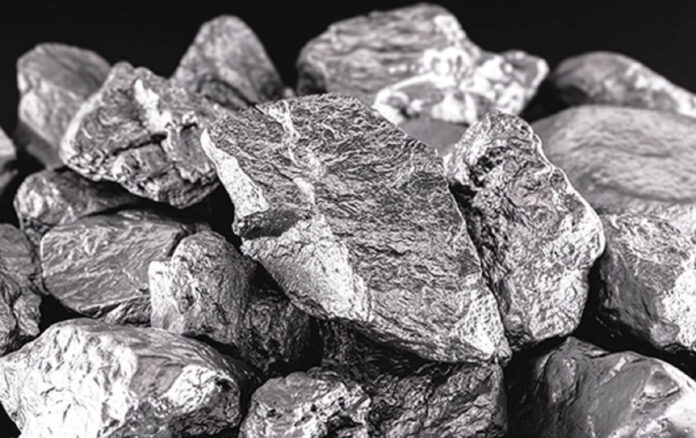Antimony, designated by the chemical symbol Sb from its Latin name Stubium, is a periodic table element with atomic number 51. It’s naturally found on earth as Stibnite, a sulfide form with chemical formula Sb2S3. The substance is commonly used as an alloying element, flame-retardant and a semiconductor dopant. Given its varied applications, it’s natural to wonder about the nature of the element: Is it a metal, metalloid, or a non-metal?
Antimony is a Metalloid
Antimony sits between metals and nonmetals on the periodic table. The latter is a chart that groups elements based on their atomic number, electron configuration, and, of course, chemical properties. By design, atoms of elements in the same row (group) have the same number of electrons in their outer shells, meaning they typically form the same type of bonds.
Furthermore, the periodic table divides elements into metals, non-metals, and metalloids. Metals are found on the left side, with the exception of hydrogen (a non-metal). Then, on the right-hand side, we have the non-metals. Between the metals and non-metals are the metalloids Boron, Silicon, Arsenic, Polonium, Tellurium, and Antimony. Because of that, the element has properties that are partially from the metals and partially from the non-metals. Here’s a look.
Physical Properties of Antimony
Antimony is a solid substance at standard room temperature and pressure. It can exist as a brittle silver-white lustrous metallic substance or as a greyish powder. It melts and boils at 903.78 K and 1908 K, respectively, making it suitable for applications that require poor heat and electricity conductivity. However, pure forms of the element are widely employed as dopants in semiconductor devices.
Chemical Properties of Antimony
Antimony is extremely stable in dry air and doesn’t react with cold water, dilute alkalis, or weak acids. However, it does dissolve in aqua regia and certain hot acids. Aqua regia is a nitric and hydrochloric acids combo.
Isotopes
Antimony occurs in four isotopic forms; one is a stable metallic variant, while the rest are yellow, black, and explosive metastable isotopes. The explosive isotope is formed via electrolysis of antimony trichloride and is the rarest. Black antimony is obtained from antimony vapor via cooling processes.
It’s crystalline and oxidizes rapidly in air. However, it cools at 100 °C, gradually transforming into a stable form. Yellow antimony results from the oxidation of stibine at −90 °C. It’s the most unstable isotope but transforms into black antimony gradually.
Application of Antimony
Pure antimony is used as an additive in semiconductor devices such as infrared detectors and diodes; the process is known as doping and helps improve the electrical conductivity of certain substances.
Antimony is also a superb alloying element. You can add to lead for improved mechanical strength and hardness. It’s used to improve the strength and conductivity of plates used in lead-acid batteries.
It’s also used to make lead keels for sailboats and yachts. It makes lead keels harder and more resistant to the forces of deformation. Other applications of antimony include cable sheathing and as a compound in flame-prof roofing materials, glasses, ceramics, and paints.
Parting-Shot
Antimony is an element of the periodic table in the semimetal series. From a chemistry interpretation, it’s rather a metal. It sheds electrons easily and even resembles a metal in appearance. Metallic antimony is a silver-white lustrous substance with a qualitative hardness of 3 on the Mohs scale.
Read Also: The Future of Medicine: Robotics and the Role of Doctors
However, unlike other metals antimony doesn’t conduct heat and electricity well enough to be recognized as a true metal. Nevertheless, these properties make the element useful in a smorgasbord of applications ranging from flame retardants to alloying and semiconductor dopant. Contact us for a shipment of high-quality antimony.










